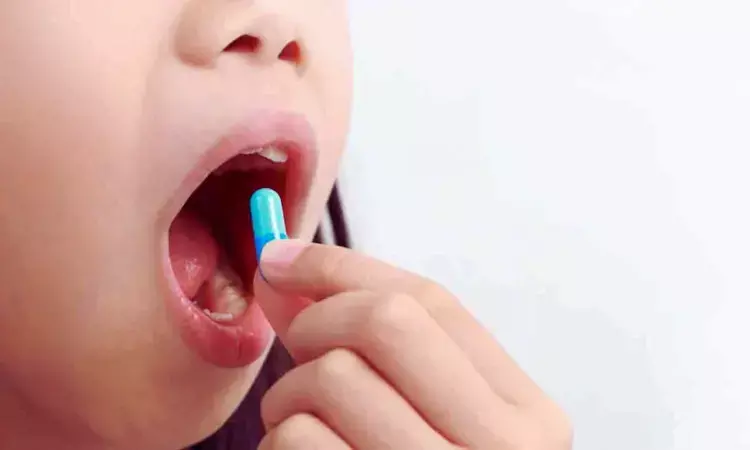- Home
- Medical news & Guidelines
- Anesthesiology
- Cardiology and CTVS
- Critical Care
- Dentistry
- Dermatology
- Diabetes and Endocrinology
- ENT
- Gastroenterology
- Medicine
- Nephrology
- Neurology
- Obstretics-Gynaecology
- Oncology
- Ophthalmology
- Orthopaedics
- Pediatrics-Neonatology
- Psychiatry
- Pulmonology
- Radiology
- Surgery
- Urology
- Laboratory Medicine
- Diet
- Nursing
- Paramedical
- Physiotherapy
- Health news
- Fact Check
- Bone Health Fact Check
- Brain Health Fact Check
- Cancer Related Fact Check
- Child Care Fact Check
- Dental and oral health fact check
- Diabetes and metabolic health fact check
- Diet and Nutrition Fact Check
- Eye and ENT Care Fact Check
- Fitness fact check
- Gut health fact check
- Heart health fact check
- Kidney health fact check
- Medical education fact check
- Men's health fact check
- Respiratory fact check
- Skin and hair care fact check
- Vaccine and Immunization fact check
- Women's health fact check
- AYUSH
- State News
- Andaman and Nicobar Islands
- Andhra Pradesh
- Arunachal Pradesh
- Assam
- Bihar
- Chandigarh
- Chattisgarh
- Dadra and Nagar Haveli
- Daman and Diu
- Delhi
- Goa
- Gujarat
- Haryana
- Himachal Pradesh
- Jammu & Kashmir
- Jharkhand
- Karnataka
- Kerala
- Ladakh
- Lakshadweep
- Madhya Pradesh
- Maharashtra
- Manipur
- Meghalaya
- Mizoram
- Nagaland
- Odisha
- Puducherry
- Punjab
- Rajasthan
- Sikkim
- Tamil Nadu
- Telangana
- Tripura
- Uttar Pradesh
- Uttrakhand
- West Bengal
- Medical Education
- Industry
Meta-Analysis Reveals 20 Percent of Indian Children Use Antibiotics Without Prescription

India: A new systematic review and meta-analysis published in BMC Pediatrics has revealed the troubling prevalence of antibiotic self-medication (ASM) among children in India, suggesting a potentially significant contributor to increasing antibiotic resistance. The research, led by Tambe Daniel Atem from the School of Pharmaceutical Sciences at Lovely Professional University, Punjab, examined the scale and factors linked to ASM across various regions of the country.
The study, which analyzed data from 17 studies encompassing 7,847 children, revealed that approximately 19.8% of Indian children had received antibiotics through self-medication. Notably, the northern region of India reported the highest prevalence at 30.7%, reflecting regional disparities in ASM practices.
Using a comprehensive literature search across databases like PubMed, Embase, Scopus, and Google Scholar, the researchers identified studies published up to December 2024. Eligible studies included those reporting ASM prevalence in the pediatric population. The analysis applied a random-effects model using R software, and quality assessment was performed with the JBI tool for prevalence studies.
The review identified several underlying factors contributing to this trend. These included financial and time-related constraints that discouraged formal medical consultation, perceptions that the child’s illness was not serious, and inadequate access to healthcare services. Parents and caregivers often resorted to local pharmacies, previously prescribed antibiotics, leftover medications, or advice from friends and family for sourcing and administering antibiotics to children.
Information regarding antibiotic use primarily stemmed from prior prescriptions, suggestions from pharmacists, media exposure, and personal experiences. On average, antibiotics were administered for just 2.5 days, often too short a course to be clinically effective and potentially contributing to antimicrobial resistance.
Key findings include the following:
- The analysis included 17 studies with data from 7,847 children.
- The pooled prevalence of pediatric antibiotic self-medication (ASM) in India was 19.8%.
- The northern region showed the highest ASM rate at 30.7%, indicating significant regional variation.
- There was no notable difference in prevalence between hospital-based and community-based studies.
- Financial and time constraints, perceived mildness of illness, and poor access to healthcare were key drivers of ASM.
- Antibiotics were commonly sourced from local pharmacies, leftover medications, and advice from friends or family.
- Information on antibiotic use often came from previous prescriptions, family or friends, media, personal experiences, and pharmacists.
- The average duration of antibiotic use was 2.5 days.
“Self-medicating children with antibiotics poses considerable health risks and threatens long-term treatment efficacy,” the authors cautioned. They added that while the absolute prevalence may appear moderate, the implications are far-reaching, especially in terms of encouraging antibiotic resistance at a young age.
The study found no significant difference in ASM rates between community-based and hospital-based settings. However, the high heterogeneity among studies and reliance on self-reported data were highlighted as limitations. Some of the included research was found to have a moderate risk of bias, and limited database access may have constrained the breadth of analysis.
The researchers stressed the urgent need for public health interventions to address the issue. They called on government agencies and policymakers to strengthen antibiotic stewardship, raise awareness among parents and caregivers, and ensure strict regulation of over-the-counter antibiotic sales.
“Efforts to reduce antibiotic misuse must begin at the household level,” the authors emphasized, underlining the need for campaigns that highlight the risks of self-medication in children and promote timely consultation with qualified healthcare providers.
"As antibiotic resistance continues to grow as a global threat, such findings emphasize the critical role of responsible medication practices, particularly among vulnerable populations like children," the authors concluded.
Reference:
Atem, T.D., Singh, R., Newbury-Birch, D. et al. Prevalence and associated factors of self-medication with antibiotics among pediatric population in India: a systematic review and meta-analysis. BMC Pediatr 25, 451 (2025). https://doi.org/10.1186/s12887-025-05676-8
Dr Kamal Kant Kohli-MBBS, DTCD- a chest specialist with more than 30 years of practice and a flair for writing clinical articles, Dr Kamal Kant Kohli joined Medical Dialogues as a Chief Editor of Medical News. Besides writing articles, as an editor, he proofreads and verifies all the medical content published on Medical Dialogues including those coming from journals, studies,medical conferences,guidelines etc. Email: drkohli@medicaldialogues.in. Contact no. 011-43720751


